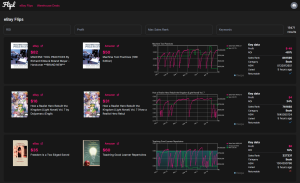Building a Minimum Viable Product doesn’t have to drain your startup’s runway. Smart founders understand that speed and cost-efficiency matter more than perfection when testing business ideas. The 2025 landscape offers unprecedented opportunities to launch functional products without the traditional six-figure development costs.
The Real Cost of MVP Development in 2025
Building an MVP costs anywhere from $5,000 to $150,000, depending on factors like team structure, project complexity, and location. However, these traditional estimates no longer tell the complete story. The emergence of AI-powered development and no-code platforms fundamentally changes the economics of product creation.
Traditional Development Costs:
- In-house teams: $25,000-$150,000+ per month
- Development agencies: $10,000-$65,000 per month
- Freelancers: $4,000-$15,000 total project cost
Modern Alternatives:
- No-code platforms: $2,000-$10,000 total, cutting approximately 30% to 70% of traditional development expenses
- AI-accelerated development: Up to 70% cost reduction compared to traditional coding
Leverage AI-Powered Development for Maximum Efficiency
Artificial Intelligence transforms how startups approach MVP creation. The average timeframe for bringing your AI project’s MVP version to life is 1 to 3 months, compared to traditional timelines of 3-6 months or longer.
AI Development Benefits:
- Using pre-trained AI models instead of training from scratch can reduce AI development costs by 50-80%
- Automated code generation eliminates repetitive programming tasks
- Real-time bug detection and fixing reduces debugging time
- Instant prototype generation for faster iteration
Some companies offer MVP Development for Startups using AI-accelerated approaches, enabling 2-6 week development cycles at 60% lower costs than traditional agencies.
Master the No-Code Revolution
No-code platforms democratize product development, allowing non-technical founders to build sophisticated applications. Non-technical founders now make up 40% of startups, up from 25% in 2019, largely thanks to these accessible tools.
Top No-Code Platforms for 2025:
- Bubble: Complex web applications with database functionality
- Adalo: Native mobile apps for iOS and Android
- Webflow: Professional websites and landing pages
- Glide: Spreadsheet-to-app conversion in minutes
Real Cost Breakdown: Expect the true cost of a no-code MVP to land somewhere between $2,000 (if you’re frugal and doing it all yourself) and $30,000+ (if you’re hiring help and want polish). Factor in monthly subscription costs, plugin fees, and scaling charges as your user base grows.
Strategic Cost-Cutting Approaches
1. Start with Cross-Platform Development
Cross-platform solutions like Flutter or React Native let you write one codebase for both platforms, potentially cutting costs by up to 40%. This approach eliminates the need for separate iOS and Android development teams.
2. Prioritize Core Features Ruthlessly
Apply the MoSCoW method to your feature list:
- Must-have: Essential features for core functionality
- Should-have: Important but not critical for launch
- Could-have: Nice features for future iterations
- Won’t-have: Features explicitly excluded from MVP scope
3. Leverage Offshore Development Talent
Partnering with IT outsourcing vendors with proven AI services expertise can lead to significant savings. Eastern European and South Asian teams offer 40-60% cost savings while maintaining quality standards.
4. Use Pre-Built Components and Templates
Startups that leverage existing components can reduce development costs by 40-60% while accelerating time to market. Focus your custom development budget on unique value propositions rather than reinventing common functionality.
Smart Development Timeline Management
Phase-Based Development Strategy:
- Phase 1: Core functionality validation (2-4 weeks)
- Phase 2: User feedback integration (2-3 weeks)
- Phase 3: Market-ready features (3-4 weeks)
This approach prevents over-engineering while ensuring each development dollar generates user insights. Traditional MVPs take months to build. No-code platforms can produce something functional in days or even hours.
Hidden Costs to Budget For
Smart founders account for expenses beyond initial development:
Ongoing Expenses (20% of development cost annually):
- Hosting and infrastructure scaling
- Third-party API fees and integrations
- Security updates and maintenance
- User analytics and monitoring tools
Growth-Related Costs:
- Payment processing setup
- Customer support systems
- Marketing automation tools
- Performance optimization
When to Choose Each Approach
Choose AI-Powered Development When:
- You need custom logic and complex workflows
- Your product requires unique algorithms or data processing
- Scalability and performance matter from day one
- You have some technical expertise in-house
Choose No-Code When:
- You need rapid validation with minimal investment
- Your MVP focuses on standard web/mobile functionality
- You lack technical co-founders
- Time-to-market takes priority over customization
Choose Traditional Development When:
- Your product requires deep technical complexity
- Security and compliance demands are stringent
- You’re building platform-level infrastructure
- Long-term scalability outweighs short-term speed
Maximize Your MVP Investment
Building cost-effectively requires strategic thinking beyond just development expenses. Startups that use an MVP approach have a 60% higher success rate than those that launch with fully-featured products, making the upfront investment in smart development approaches worthwhile.
Focus your limited resources on proving product-market fit rather than building comprehensive features. The most successful MVPs solve one problem exceptionally well, gather user feedback quickly, and iterate based on real market demand.
Remember that your MVP’s primary goal isn’t perfection—it’s learning. Every dollar saved on unnecessary features becomes available for marketing, user acquisition, and the inevitable pivots that successful startups navigate on their path to sustainable growth.
By combining AI-powered development efficiency, no-code accessibility, and strategic feature prioritization, startups can build meaningful products that test core assumptions without exhausting their financial runway. The key lies in choosing the right approach for your specific situation and executing with disciplined focus on validation over perfection.








